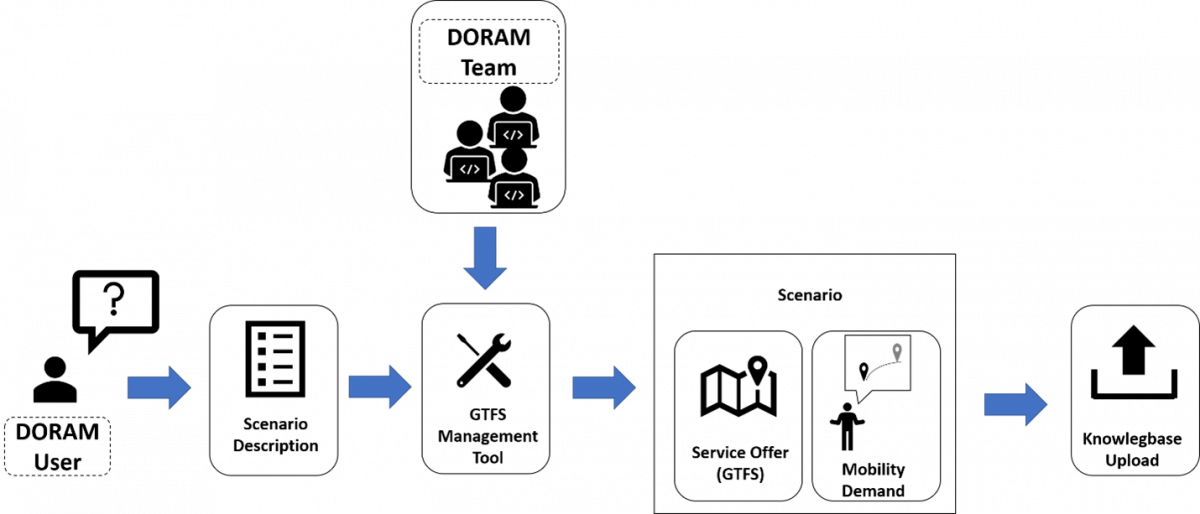DORAM tool, which is accessible here, as an example, provides two sample scenarios including Alternative Scenario 1 and Alternative Scenario 2. However, thanks to the provided flexibility, it enables DORAM enables users to define any other alternative scenario. To do so (see Figure 1):
- it is needed to have a knowledgebase to record data related to mobility demand (e.g., residential buildings, POIs) and service offer (e.g., trips, stops, timetables) in;
- record the data related to service demand in knowledgebase;
- record the data related to mobility offer in knowledgebase;
- if the data is real, simply upload the General Transit Feed Specification (GTFS) model into the knowledgebase;
- otherwise, it is needed to provide a GTFS model using a GTFS management tool. It is then possible to, compared to Actual Scenario, make any desired changes. To mention a few:
- changing the number of stops in the analysis area
- changing the number of trips that passing a (set of) stop(s)
- adding/removing a (set of) mobility operator(s)
- adding/removing a (set of) mobility modality (modalities) (e.g., subway)

It is noted that while the user can use any GTFS editor tool, it is recommended to use the static GTFS Manager which is an open source GUI for creating, editing, and exporting of static GTFS data for a public transit authority. For further reading on how to use the tool one could refer to here;